
Tundra
Ivvavik National Park
Tundra health is one of two ecosystem indicators in the park. Parks Canada monitors tundra health using five different measures, and each of these provide insight into the functioning and the health of the ecosystem. This helps inform plans and decisions to keep the park healthy for the present and for the future.
Porcupine Caribou herd
The Porcupine caribou herd migrates through 250,000 km² of northern Alaska, Yukon and the Northwest Territories, and is an important source of subsistence food for communities within its range. Ivvavik National Park protects a significant portion of the Porcupine caribou herd’s calving and post-calving grounds, while Vuntut National Park protects the herd’s spring and fall migration range. Both of these parks were created, in part, to protect this important habitat for the herd.
Parks Canada contributes to caribou monitoring efforts with many partners, such as the Yukon and Alaskan governments.
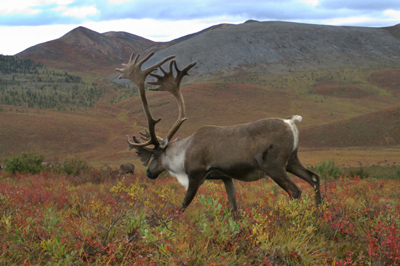
Satellite collars provide the location of the caribou that are collared. This provides information on where and how far the herd travels throughout the year, changes in rut and calving locations, and spring and fall migration routes. The collars also help biologists locate animals in order to estimate population size, reproduction and survival rates.
A post-calving photo survey is attempted by the Alaska’s Fish and Game Department every 2-3 years throughout the range of the Porcupine Caribou herd. The survey is carried out during the summer when the herd groups together, approximately a month after female caribou have given birth. Researchers locate the group using the satellite collars, wait for the group to reach maximum numbers, then take aerial photos of the herd. Later, researchers count each adult caribou in the images to gain an accurate idea of the population size.
Grizzly bear population
Grizzly bears are the largest terrestrial predator in Ivvavik National Park. They are a very important species due to their predation, and ecosystem disturbance searching for roots, grasses, and berries. To monitor grizzly bear habitat use and occupation, Ivvavik National Park uses a non-invasive remote camera program.
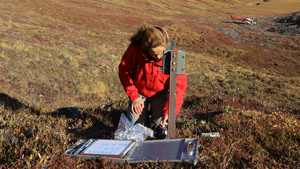
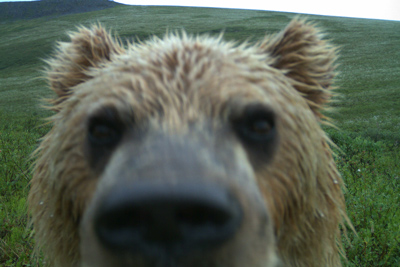
Currently, the park has 30 remote camera sites located along the Firth River, stretching from the park’s southern boundary to the Beaufort Sea at its northern boundary. Each remote camera captures photos when wildlife triggers the camera (by walking close by), as well as once a day. SD cards are swapped out and batteries are changed twice per year (in late spring and late summer), to ensure continuous photo monitoring. Each photo captured by the camera is examined by Park staff and used to document and monitor wildlife usage of the area. To see some of the images captured on the park’s remote cameras, click here.
Migratory bird populations
Parks Canada staff conduct a survey each spring on migratory bird populations in Ivvavik National Park. The survey studies multiple bird species – the majority of which are migratory – that use the park’s summer tundra habitat for breeding, feeding and nest building. Breeding birds are an important part of the park’s summer tundra ecosystem. They contribute to seed dispersal, help maintain sustainable population levels of their prey and predator species, and after death, provide food for scavengers and decomposers.
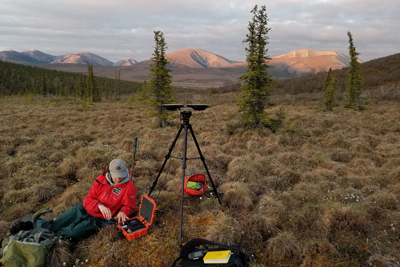
Bird populations are monitored at two sites in the park – Sheep Creek and Margaret Lake – with twenty plots at each site. Every plot is visited once a year between 3:00 AM and 7:30 AM in the spring when birds are the most active and loud. Using an acoustic recorder, bird calls are recorded for ten minutes at each plot. Later, these recordings are transcribed and allow Parks Canada to determine the number of different species of birds and their relative abundance. Given declines in bird populations elsewhere and the changing climate in Ivvavik National Park, it is valuable to monitor changes in bird populations.
To learn more about birds that frequent this region of the western Arctic, click here.
Permafrost temperature
Permafrost refers to ground that remains below 0 °C for at least 2 consecutive years. Permafrost sensors monitor changes in permafrost temperatures (soil temperature) at various depths and locations throughout the park. This allows Parks Canada to observe how seasonal thaw and air temperatures impact permafrost, and determine if there is a significant decline in permafrost in the park.
Four permafrost sensors were installed in Ivvavik National Park in collaboration with Carleton University in 2014 and 2015. The probes are drilled 14 meters into the ground, and sensors are located at 1, 5, 10, and 14 meter depths. Data from each sensor is collected annually.
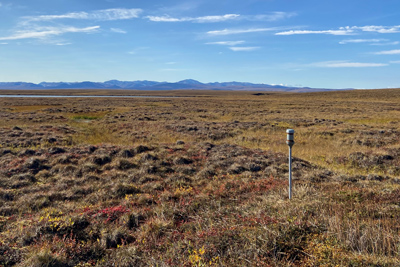
Vegetation change
Using satellite imagery, Parks Canada is in the process of implementing a vegetation monitoring program in Ivvavik National Park. The intent of the program is to observe if plant communities are changing overtime (e.g. if shrubs are increasing in area), and to determine if the start of the growing season (green-up) and the length of the growing season is changing overtime. Warmer temperatures and a changing climate in the park are expected to impact vegetation, such as increased shrub growth and an earlier green-up occurring in spring.
Related links
- Date modified :